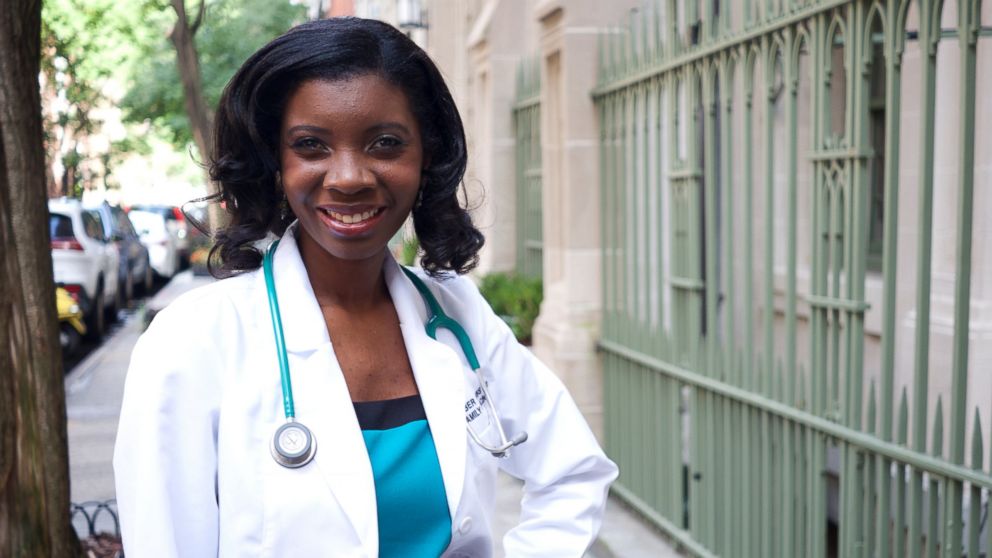Doctor's Take: Being a Minority in Medicine
Underrepresented minorities make up just 6 percent of U.S. physicians.

— -- I wake up at 5 a.m. to get ready for another day to see my patients. The moment I step into the hospital, I put on my long white coat. Not because it’s a part of my uniform, but because if I don’t wear it, people won’t think this young female black woman is a doctor.
Patients are commonly surprised by my presence when I enter the room with my stethoscope. When I introduce myself as Dr. Robins, patients expect someone else and that the real doctor will be in after I leave. Some patients are excited to see me, others don’t know what to do with me, and there is even a group that would prefer for me not to be their doctor.
Currently, just 6 percent practicing doctors are underrepresented minorities (African Americans, Hispanics and Native Americans), while they make up 31.5 percent of the U.S. population.
I didn’t meet a minority doctor until I was in college and it wasn’t until I was 27 years old, well out of medical school, that a minority physician actually treated me as my doctor.
Several researchers have found that patients seek out doctors of their own race because of personal preference. But many people of color around the country have never been cared for by an underrepresented minority doctor.
In the doctor’s office, patients usually gave more positive ratings and stayed for longer to talk to their doctor if the appointment was with a physician from a similar race or ethnicity, according to a report published in 2004 by Johns Hopkins researchers.
However, despite a growing number of minority patients, the number of underrepresented minority doctors has remained a small fraction of the medical profession.
In the 1970s, medical professionals, including the American Medical Association, began to investigate why few African Americans and Hispanics went into or were successful in medicine. While they launched programs to help facilitate underrepresented minorities to become physicians, 40 years later, only 6 percent of U.S. physicians are minorities. It’s a number that has been the same for over a century, according to a former U.S. surgeon general.
With the push for minorities in medicine, there are some places that have got the formula right. One of them is Xavier University of Louisiana, a historically black college/university, has been one of the top colleges in producing the African-American medical students and graduates for decades. It’s also the school where I got my undergraduate degree.
Quo Vadis Webster, the director of the pre-medical program at Xavier, attributes the success to the former director, Dr. JW Carmichael Jr., who started a variety of activities aimed at reaching students on “day one of freshman year."
The goal was “that students would be adequately prepared to begin applying to medical school the summer between their junior and senior years of college,” Webster said. “The same formula for success that has helped over 1,000 Xavier alumni matriculate into medical school is still being implemented at the university today.”
As a graduate, I can attest to the dedication that the university provides.
While there, I met black students who looked like me with an interest in a medical career. Being a minority in medicine was an achievable goal at Xavier. We were all given the opportunity to succeed no matter our backgrounds.
The university provides early assurance programs to help facilitate students get into medical school by helping clear hurdles that can be barriers for students to get into medical school. One of these programs allowed me to apply to the University of Rochester School of Medicine without taking the MCAT because the medical school officials know that the Xavier students are prepared.
I was accepted by my junior year of college, allowing me to prepare and save money before starting med school at age 21.
Xavier isn’t the only school working to change minority representation in medical school. Other programs are also working to increase diversity and help underrepresented minorities don a white coat.
“Access to resources that pique and nurture interest in medical school must be introduced long before students are admitted into college,” Webster said. “First and foremost, minority students need to be mentored by and have access to health professionals who look like them so they see such careers as viable options.”
A bus tour, called the Tour for Diversity, started in 2012 has this exact aim. Each year, the tour visits various college campuses to speak to minorities about ways to get to medical or dental school.
Researchers used participants from this tour to study and understand the barriers that faced underrepresented minorities in medicine. They found that minority college students felt like they had inadequate institutional resources, inadequate guidance and mentoring to assist with key career decisions, and societal barriers, according to the study published this year in Academic Medicine.
As I finish my residency in family medicine, I’m still frustrated to not see more fellow underrepresented minorities in the hospital. By 2050, the percentage of minorities in the U.S. is expected to surpass 50 percent, but I fear their representation in medicine will continue to lag far behind the overall population.
Being an underrepresented minority in medicine can be a lonely place, for both doctors and the patients. I hope that within my lifetime patients will not be shocked, but expect to have an underrepresented minority as their doctor.
Dr. Amber Robins is family medicine resident at the University of Rochester. She is a medical resident in the ABC News Medical Unit.




